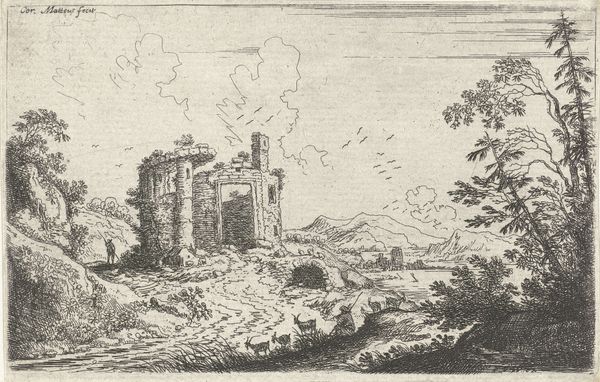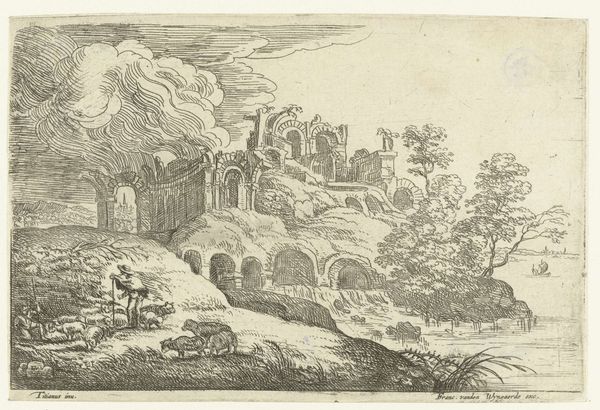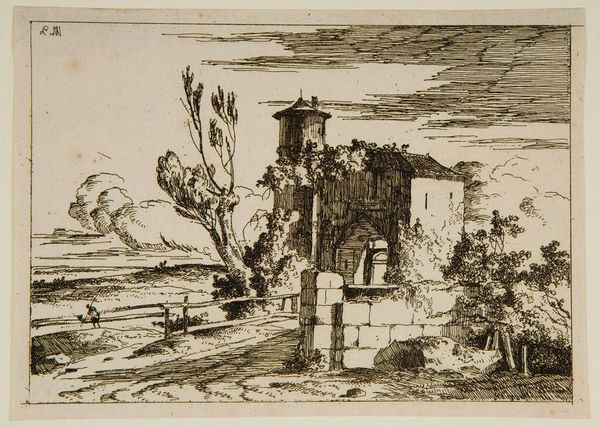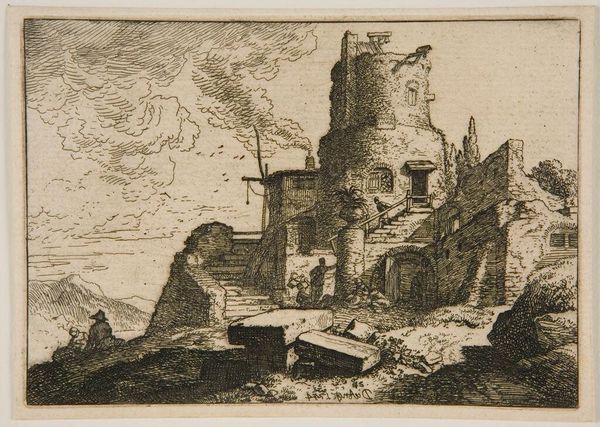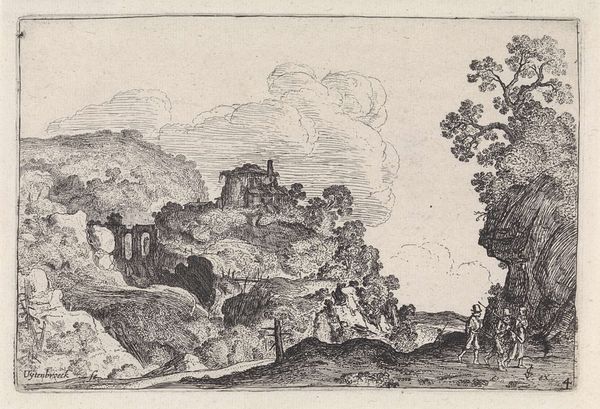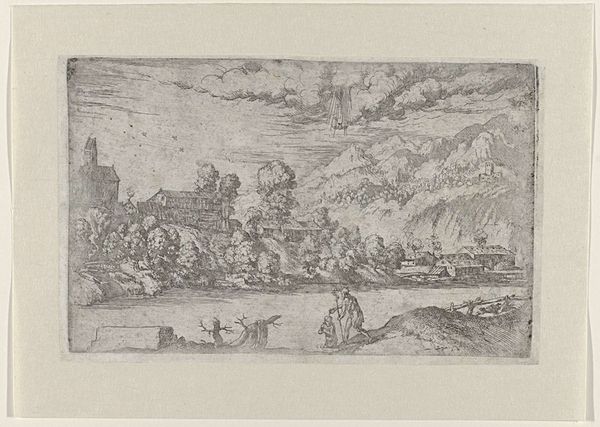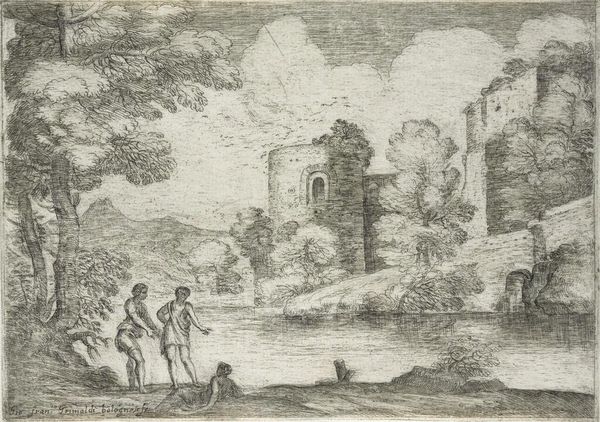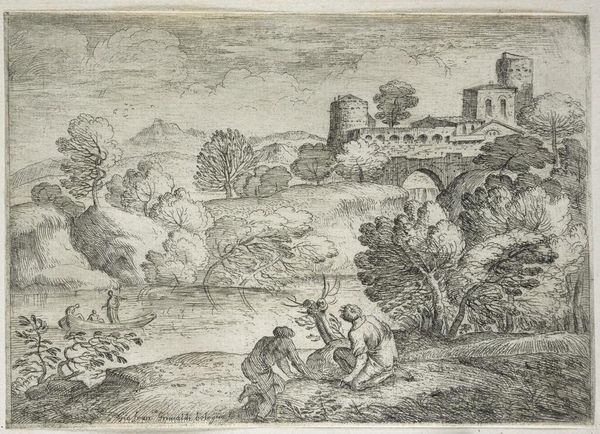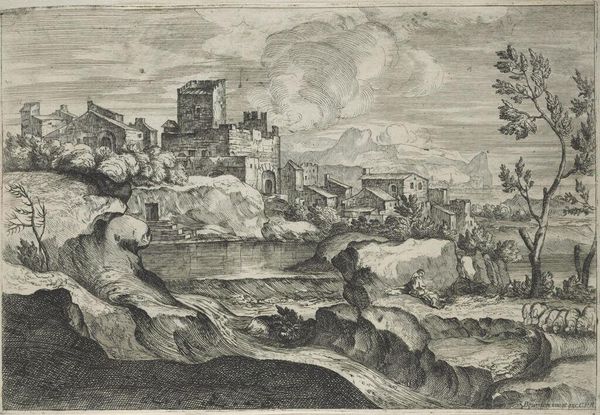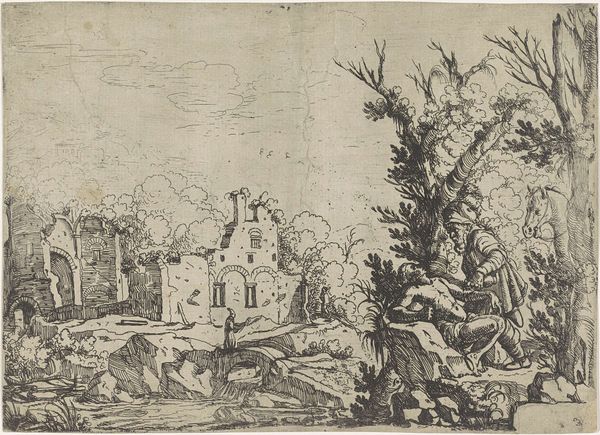
drawing, etching, ink
#
drawing
#
baroque
#
pen drawing
#
etching
#
landscape
#
river
#
form
#
ink
#
rock
#
line
#
cityscape
#
history-painting
#
academic-art
#
realism
Dimensions: height 53 mm, width 91 mm
Copyright: Rijks Museum: Open Domain
Editor: This intricate 17th-century etching, titled "Gebouwen op een rots bij een rivier" – "Buildings on a Rock by a River" – caught my eye. The anonymous artist used ink to depict what appears to be a fortified structure dominating a riverside landscape. What I find fascinating is the stark contrast between the solidity of the architecture and the almost dreamlike quality of the river and surrounding land. How do you interpret this work? Curator: It’s a compelling image, certainly. From a historical perspective, I’m drawn to considering its function. Was this simply a landscape study, or did it serve a propagandistic purpose? In the 17th century, imagery often reinforced political power. Note the placement of the building – a fortress? – elevated above the river. Does this reinforce notions of dominance and control over the landscape, both physically and symbolically? Editor: That's interesting! I hadn’t thought about the political implications. It seems like a straightforward landscape, but now I see the potential for the artist to comment on power dynamics through the building's placement. Do you think the seemingly "anonymous" nature of the work is deliberate, to further detach the image from any direct political affiliation and focus on broader themes? Curator: Precisely. Anonymity, in this context, can function as a strategic move, shielding the artist from potential repercussions while subtly influencing the viewer’s perception. Consider the rise of landscape art during this period and its connection to burgeoning national identities. Whose land is this, and what does it represent? The lack of overt signature opens the artwork up to varied interpretations of its significance within Dutch society. The controlled strokes and meticulous detail almost highlight this idea. Editor: So, it's less about the artist’s personal vision and more about the public role of the artwork, how it functions within the broader cultural conversation. That gives me a whole new appreciation for seemingly simple landscapes. Curator: Exactly! The 'simple' often masks complex ideological undercurrents. It challenges our preconceived notions of what landscapes truly signify, extending beyond pretty pictures to reflections of historical realities.
Comments
No comments
Be the first to comment and join the conversation on the ultimate creative platform.
